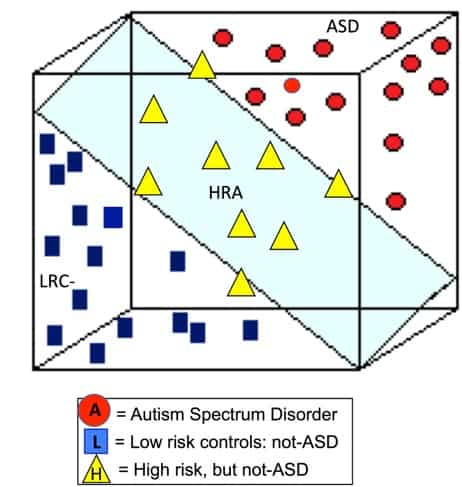
Autism spectrum disorder (ASD) is a complex condition that’s challenging to diagnose, especially early in life. Now, US researchers have shown that electroencephalograms (EEGs), which measure brain electrical activity, can accurately predict or rule out ASD in infants as young as three months old (Scientific Reports 8 6828).
“EEGs are low-cost, non-invasive and relatively easy to incorporate into well-baby check-ups,” said co-author Charles Nelson, director of the Laboratories of Cognitive Neuroscience at Boston Children’s Hospital. “Their reliability in predicting whether a child will develop autism raises the possibility of intervening very early, well before clear behavioural symptoms emerge. This could lead to better outcomes and perhaps even prevent some of the behaviours associated with ASD.”
The researchers examined EEG data from 99 infants considered at high risk for ASD (having an older sibling with the diagnosis) and 89 low-risk controls. EEGs were recorded from three until 36 months of age, by fitting a net containing 128 sensors over the babies’ scalps. All babies also underwent extensive behavioural evaluations with the Autism Diagnostic Observation Schedule (ADOS), an established clinical diagnostic tool.
The team used computational algorithms developed by first author William Bosl to analyse six EEG frequency bands (high gamma, gamma, beta, alpha, theta and delta). They computed nine nonlinear features for each of the frequency bands, to give as complete a characterization of the signal dynamics as possible. The algorithms predicted a clinical diagnosis of ASD with high specificity, sensitivity and positive predictive value, exceeding 95% at some ages.
“The results were stunning,” said Bosl. “Our predictive accuracy by nine months of age was nearly 100%. We were also able to predict ASD severity, as indicated by the ADOS calibrated severity score, with quite high reliability, also by nine months of age.”
Bosl believes that the early differences in signal complexity, drawing upon multiple aspects of brain activity, fit with the view that autism is a disorder that begins during the brain’s early development but can take different trajectories. In other words, an early predisposition to autism may be influenced by other factors along the way.
“We believe that infants who have an older sibling with autism may carry a genetic liability for developing autism,” said Nelson. “This increased risk, perhaps interacting with another genetic or environmental factor, leads some infants to develop autism – although clearly not all, since we know that four of five do not develop autism.”



